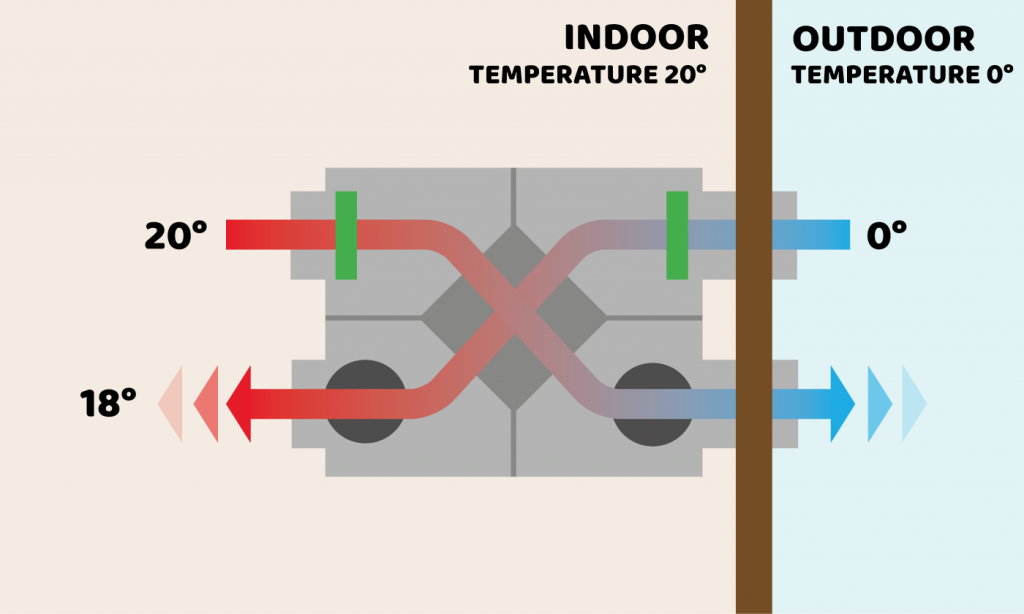Discovering the Perks of Heat Recovery Ventilation for Power Effectiveness in Residences
Heat Recovery Ventilation (HRV) systems offer house owners a functional technique to boosting power performance. By reclaiming warmth from outbound air, these systems can substantially decrease heating & cooling costs. Furthermore, they provide a constant supply of fresh air, improving indoor air high quality and convenience levels. As home owners take into consideration lasting alternatives, understanding the subtleties of HRV systems ends up being increasingly essential. What elements should one evaluate prior to making such an investment?
Understanding Heat Recovery Ventilation Solutions

Just How HRV Improves Indoor Air High Quality

Energy Cost Savings: The Monetary Advantages of HRV
Taking full advantage of why not check here power performance, heat recovery ventilation (HRV) systems offer significant economic advantages for house owners. By recovering and reusing heat from exhaust air, HRVs considerably minimize cooling and heating costs. This modern technology can bring about energy cost savings of as much as 30%, depending upon environment and usage patterns. Homeowners usually discover lowered utility image source costs soon after installation, making HRVs an economically wise financial investment in time. In addition, lots of areas provide rewards or refunds for energy-efficient upgrades, even more enhancing the economic charm. As energy rates remain to climb, the cost-effectiveness of HRVs becomes increasingly clear. In general, the consolidation of HRV systems not just advertises power performance yet additionally contributes to long-lasting economic savings for houses.
The Ecological Impact of Heat Recovery Ventilation
A substantial environmental advantage of heat recovery ventilation (HRV) systems lies in their capacity to reduce total power consumption. By reclaiming heat from exhaust air and transferring it to incoming fresh air, HRV systems decrease the need for energy-intensive heating and cooling down approaches. This decrease in energy demand adds to reduce greenhouse gas emissions, as much less fossil gas is called for to preserve comfortable interior temperature levels. In addition, HRV systems boost interior air top quality by efficiently exchanging stagnant air with fresh exterior air, decreasing reliance on mechanical air conditioning systems find more information that can damage the setting. On the whole, the implementation of HRV systems supports lasting living techniques and straightens with international efforts to deal with climate modification by promoting power performance in domestic setups.
Choosing the Right HRV System for Your Home
Just how can home owners ensure they select the appropriate heat recovery ventilation (HRV) system for their requirements? They need to evaluate their home's dimension and format, as these factors influence air movement requirements. Next, evaluating the system's effectiveness scores is important, as higher rankings indicate far better efficiency and power cost savings. House owners must likewise consider installation and upkeep prices, contrasting various brand names and designs for value. In addition, it is very important to examine sound degrees, as some systems run more quietly than others. Consulting with HVAC specialists can supply tailored recommendations based upon details home conditions. Examining individual reviews and guarantees can help in making an informed decision, making sure that the picked HRV system effectively boosts interior air quality and power efficiency.
Frequently Asked Questions

Just how Typically Should I Clean or Maintain My HRV System?
The regularity of cleansing or keeping a heat healing ventilation (HRV) system typically depends on usage and environmental factors. Generally, it is a good idea to perform upkeep every 6 months to guarantee peak efficiency and air quality.

Can HRV Equipments Help Lower Humidity Levels Inside Your Home?
HRV systems can successfully lower indoor humidity degrees by exchanging stale, moist air with fresh, drier air from outside. HRV Heat Recovery Ventilation. This process assists keep a balanced indoor setting, improving convenience and avoiding moisture-related problems
What Is the Life expectancy of a Regular HRV System?
The lifespan of a normal heat recovery ventilation (HRV) system varies, typically lasting in between 10 to 15 years. Normal upkeep can extend its performance and functional life, making certain peak performance throughout its usage duration.
Are There Any Kind Of Sound Interest In HRV Solutions?
Noise worries with HRV systems can arise, especially from follower procedure. Nonetheless, numerous modern units are designed to decrease audio levels, guaranteeing they run quietly while maintaining performance, which deals with possible disruptions in living environments.
Can I Mount an HRV System Myself, or Do I Need a Professional?
The private contemplated whether to set up the heat recovery ventilation (HRV) system personally or work with an expert. Usually, while do it yourself installation is feasible, know-how assurances proper capability and compliance with neighborhood building regulations, improving system effectiveness.